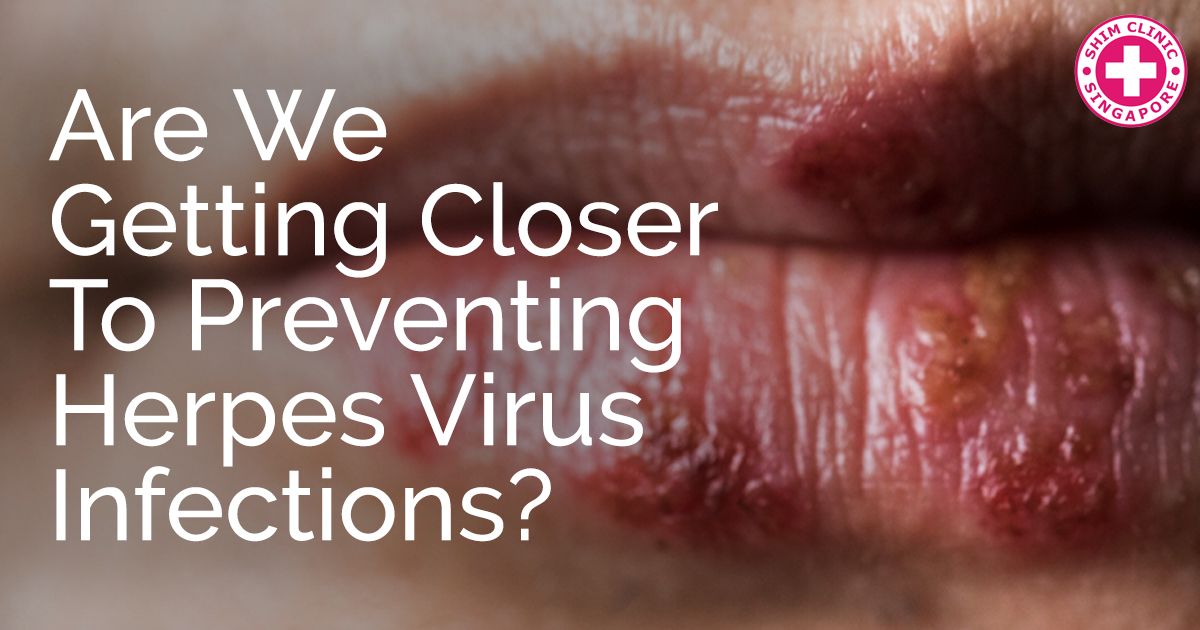Genital herpes doesn’t get spoken about as often as other common STDs do. Still, it affects about 16 per cent of the sexually-active 14 to 49-year-olds, causing the appearance of painful blisters in the genital area.
The spread of the virus occurs through contact with mucous membranes and once herpes gets inside your body, it starts multiplying quickly. People experience the symptoms of a genital herpes infection anywhere between two and 30 days after the exposure.
The scientific community has been doing a lot of work on the prevention of genital herpes infections. Due to the work done at Washington State University (WSU), it may be one step closer to achieving that goal.
Blocking the Virus Before an Infection Occurs?
HSV-1 is the most common type of virus contributing to herpes and it’s also the focus of the WSU research.
Recently, clinicians from the university published the results of their new study in the American Society for Microbiology’s journal. They managed to identify how the virus uses a specific type of protein as a signaller needed to infect healthy bodily cells.
Once inside the body, HSV-1 launches a so-called attack sequence that allows it to get into cells and to begin replicating. For the purpose, the virus uses glycoprotein C that’s found on its surface. Glycoprotein C detects changes in cellular activity level, after which glycoprotein B initiates the actual infiltration of the cell.
If this protein mechanism can be disrupted, we could prevent an infection with the HSV-1 virus, the research team concluded. Obviously, that’s just a theory that will have to be studied further. The clinical trial, however, highlights a viable opportunity for addressing effectively a really common and persistent type of sexually transmitted infection.
The Significance of the New Research
According to the World Health Organization (WHO), 3.7 billion people across the globe are infected with HSV-1. Currently, no vaccine exists against the virus.
There’s an even more problematic fact than that – HSV-1 can easily go into hiding. Many people who are infected will not show symptoms. These people could have unprotected contact with others, which leads to the further spread of the infection.
After the initial infection occurs, the virus can easily go into hiding. The aim of the new research and of similar studies is to prevent the initial infection and to reduce the risk of asymptomatic people infecting others with HSV-1.
A lot of research will be required to stop the herpes virus once and for all. According to professionals, it’s a lot more complex than other viruses, which calls for a more thorough approach. The structure of the herpes virus is really intricate. It has approximately one dozen proteins on its surface that interact with human cells in specific ways. In comparison, the human immunodeficiency virus (HIV) and the influenza virus only have two to three proteins.
The next research phase, before blocking HSV-1 for good, would be to understand how the two examined proteins interact with each other, where and when exactly that interaction occurs to enable the attack on human cells.
Protecting Yourself from a Herpes Infection
While we wait for medics and microbiologists to come up with a way to block the herpes virus, it’s imperative to understand the precautionary measures aimed at limiting the possibility of an infection.
Genital herpes spreads through contact with an existing sore, through saliva and genital fluids. Thus, unprotected contact is a big no-no, regardless of the type of sexual activity you plan to enjoy with a partner.
You can get herpes from a person who doesn’t have a visible sore. Thus, the fact that everything looks perfectly healthy does not mean you’re entirely out of risk.
Testing for herpes is a viable possibility if you are in a monogamous relationship and you decide to stop using protection. There are several screening options. Visiting a reputable clinic in Singapore like Shim Clinic will enable you to benefit from the available and highly accurate testing opportunities.
Just like in the case of other STDs, however, a test may give you a false positive if you go for screening too soon after the suspected exposure. General recommendations are to wait anywhere between 12 and 16 weeks from your last unprotected contact before going for testing. This waiting period is required for the very accurate and type-specific blood tests available in facilities like Shim Clinic.
Blood tests can be used in people who have no visible symptoms of a genital herpes infection. Even in such instances, the viral load will be sufficient enough to show up on a test after the required waiting period.
If you are in a relationship with a person who is positive for herpes, you can reduce your risk of infection in a number of ways. For a start, the risk goes down whenever your partner takes anti-herpes medications. It’s also vital to refrain from having intercourse whenever your partner is having symptoms of herpes (an outbreak).
Be aware of the fact that not all herpes sores appear in the genital area. Thus, skin to skin contact with an infected individual could also be classified as a risky activity.
At Shim Clinic, we can provide you with more thorough and accurate information about the nature of genital herpes, the infection methodology and the best ways to protect yourself. Please do not hesitate to contact us right now or visit the clinic during our working hours every day of the week.

